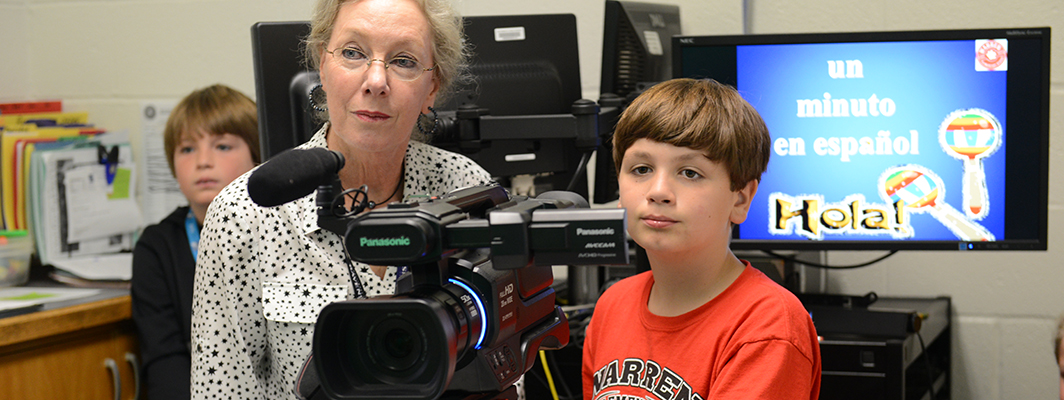
Seymour Papert is often seen as one of the most important founding figures of the maker movement in education, and the value of audience in maker learning is derived explicitly from his learning theory of Constructionism. Constructionism is tied to the idea of making sharable artifacts — things that exist outside the head of the learner to be “shown, discussed, examined, probed, and admired.”
In considering the viewer or user of their work, students must think about their own role in the world through the work they bring into it. Even if a project begins as playful tinkering for personal enjoyment, students will quickly discover opportunities for interaction with others. Those opportunities also can be cultivated through the design of a project’s prompt and goals. Setting up a project with a clear expectation of sharing it outside the classroom can greatly increase student engagement and determination.
One way to embed audience in maker learning projects is through the practice of human-centered design or design thinking. These design practices emphasize a process of designing products or systems for a specific user or group of users. Design thinking explicitly calls on its practitioners to put themselves in the role of their user multiple times, as they develop and iterate on their designs. In doing so, they develop empathy and perspective-taking: one of the key outcomes of emphasizing audience in maker learning. Stanford’s d.School and Project Zero’s Agency by Design both share great resources to get started practicing human-centered design with students.
Audience-focused projects can also be created in a more traditional sense when sharing and storytelling allow students to practice skills and develop products for communication — be they written, oral, or visual; presented live, recorded, or programmed with code. Making media has always been an important aspect of making — both in and out of schools — and successful media storytelling is grounded in a clear understanding of audience.
For example, the 360 Filmmakers Challenge is designed to invite young people to share their communities with the world, to help people understand a new perspective or inspire action. One of the youth participants, whose film was recognized for technical and creative excellence, wanted to show his audience that a boxing gym can be a supportive community.
Both design thinking and storytelling can be integrated into a project prompt calling for students to develop a product and bring it to market. The process of designing a product, system, or service will require human-centered design, while bringing it to the public requires storytelling and communication. If you want to get started with a project like this enter the The Digital Promise filmMAKER Challenge and use the resources from the teacher’s guide to get you and your students started with practice activities and hands-on lessons.
When we design student projects with a clear focus on audience, and provide students with the right tools to consider their audience in their own project planning, we inherently increase both the agency and authenticity of a project. An authentic audience creates relevance, but can also raise the stakes of a project, for both students and teachers, so take care to set realistic expectations and outcomes for all involved. Most importantly, leveraging audience humanizes school work, and helps students develop the empathy and perspective-taking skills they will need for the rest of their lives.

We want to hear from you!
Please take this 5-minute survey and help us serve you better.
